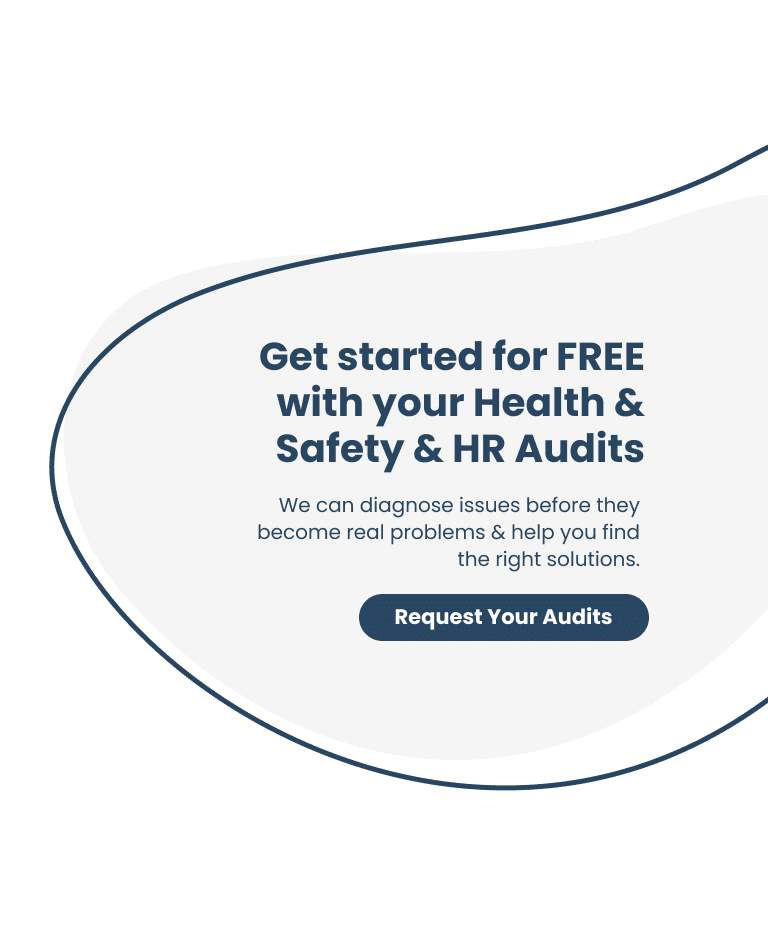This ‘Toolkit’ will give you positive strategies on how to implement a ‘Workplace Wellbeing Strategy’.
There is always a degree of resistance with regards to employee wellbeing; workplace wellbeing strategies and initiatives, particularly for SME’s – there is always something more important to spend the money on, or is there?
TOOLKIT COST
We can offer Our Workplace Wellbeing ‘Stress Risk Assessment’ & Wellbeing Strategy Toolkit for a one off payment of;
£350+VAT
FOUNDATION RETAINER
£650/month+VAT
…which includes your personal H&S & HR Consultant; Email & Telephone Advice (& on site if relevant) as & when you need us !
What's included?

Why Mental Health Matters in the Workplace?

The Importance of an Open & Inclusive Culture

Workplace Wellbeing & The Business Case

A Companies' Roles & Responsibilities

FREE Mental Health Awareness First Aid E-Learning Course

Implementing a Workplace Wellbeing Strategy

Supporting Mental Health at Work & The Facts

Line Manager Guides
Workplace Wellbeing Guidance - including Stress
Supporting Bereaved Employees Guide
Workplace Wellbeing Guidance - including Risk of Suicide
Step by Step Guide to your Workplace Risk Assessment
for over 5 employees/workers
Mental Health & Wellbeing Training Provider
Positive Strategies to Support Remote Workers
Useful Links
Within this ‘Toolkit’ we will give you positive strategies on how to implement a ‘Workplace Wellbeing Strategy’. We will outline the roles and responsibilities within a business. We include legislation, data and facts and benefits about ‘Supporting Mental Health at Work’.
We give you a comprehensive list of Workplace Wellbeing Ideas and Strategies; including a complete guide to ‘Mental Health Resources Toolkit’.
We also include Management Guides such as;
Workplace Wellbeing Guidance – including Stress
Workplace Wellbeing Guidance – Including Risk of Suicide
Supporting Bereaved Employees Guide
Picture this: your project lead calls in sick for a week. The team rallies, deadlines shift, and stress levels rise. It is not just about the days lost. It is about the ripple effect on people, projects, and business outcomes.
That is the real story behind today’s absence figures. The Office for National Statistics (ONS data) reported that sickness absence dipped slightly in 2024 to 2.0 per cent (4.4 days per employee). But new CIPD research shows a sharper reality: UK employees were off sick for an average of 9.4 days in the past 12 months, almost two full working weeks. That is the highest level in over a decade, and well above the pre-pandemic average of 5.8 days.
Rachel Suff, senior wellbeing adviser at the CIPD, the professional body for HR and people development, said:
“It’s really important for individuals, organisations and society that employers take a proactive approach to support people managing health conditions while working. The longer someone is off, the more they might struggle to return. Long or repeated periods of sickness absence can make it difficult for organisations to plan their work, and unplanned absences can also place additional strain on colleagues.
“As people are working and living longer, employers need to create workplaces that are supportive and help staff manage their health. Changes, like flexible hours and adjustments to workload, can often make a big difference to help prevent ill health from worsening and absence.
“Employers should also focus support on the areas where it’s needed most by addressing the main health risks to people. Since mental ill health is a leading cause of absence, taking targeted action to help employees deal with both work-related stress and personal challenges is crucial.”
To reduce sickness absence, the report urges employers to take a proactive approach to managing health risks at work, ensure that jobs don’t contribute to poor health, and provide effective support for employees with long-term conditions.
Find out more about Our Workplace Wellbeing Services

Unsure about where to start? Worry not, we can support you through the process step by step.
HSE Management Standards
We will talk you through step by step the HSE Management Standards Risk Assessment Approach.
Stress Risk Assessment
A Stress Risk Assessment is not a generic risk assessment that you can just put your company name on and adopt wholesale without any thought. This would not satisfy the law – and would not be effective in protecting people. Every business is different – you need to think through the hazards and controls required in your business for yourself.
You should review your risk assessment if anything changes (eg following a case of stress-related ill health in the workplace or if there are any significant changes, such as new work activities).
Whether an employer is a small business or a large corporation, the law requires all employers to assess the risk of work-related stress and to put steps in place to tackle those risks.
Read more about the CIPD’s Health & Wellbeing At Work Annual Survey Results Health and wellbeing at work | CIPD
Employers have a legal duty to protect employees from stress at work by doing a risk assessment and acting on it. If you have fewer than five workers you don’t have to write anything down. But it is useful to do this, so you can review it later, for example if something changes. If you have five or more workers, you are required by law to write the risk assessment down



